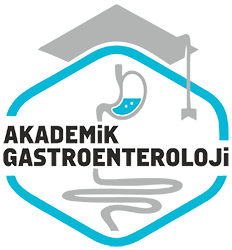Nisan 2011
Yasli popülasyonda kolonoskopi taramasi yapilmali mi?
Is colonoscopic screening necessary in the elderly population?
- Ana Sayfa
- Sayılar
- Nisan 2011
- Yasli popülasyonda kolonoskopi taramasi yapilmali mi?...
Özet
Giriş ve Amaç: Kolon kanseri için risk tasimayan bireylerde kolonoskopi taramasınin 50 yaşinda baslanmasi önerilmektedir. Ancak kolonoskopi taramasınin ne zaman durdurulmasi gerektigi konusunda fikir birligi yoktur. Biz bu çalışmada 65 yaş üzeri hastalarda kolonoskopi sonuçlarımizi değerlendirmeyi amaçladık. Gereç ve Yöntem Fatih Üniversitesi Tıp Fakültesi Gastroenteroloji Kliniginde 2007-2010 yıllari arasında 65 yaş ve üzeri kolonoskopi yapılan, dosyalarina tam ulasilan hastalar retrospektif değerlendirildi. Hastalar kolonoskopi endikasyonuna göre ortalama risk grubu ve yüksek risk grubu olarak ayrıldı. Bulgular: Ortalama risk grubunda 174 hastada (%36.8) normal kolonoskopi, 85 hastada (%18) 1 cm alti polip, 13 hastada (%2.7) 1-2 cm arasi polip, 2 hastada (%0.4) 2 cm üzeri polip, 33 hastada (%6.9) malignite, 13 hastada hiperplastik polip (%2.7), 2 hastada yüksek dereceli diplazi (%0.4) ve 149 hastada (%31.5) hemoroid, divertikülozis, kolit gibi bulgular saptandi. Kolonoskopi öncesi yüksek risk grubunda olup kolonoskopi yapılan 28 hastanın ise 7?sinde (%25) normal kolonoskopi saptanırken, 1 hastada 1 cm alti (%3.6) polip, 11 hastada (%39.3) 1-2 cm arasi polip, 1 hastada (%3.6) malignite, 8 hastada (%28.6) divertikülozis, kolit gibi bulgular saptandi. Sonuç: Biz Çalışmamızda semptomatik, yüksek risk tasiyan yaşli grup ile semptomatik olmayan ve orta risk tasiyan yaşli grupta kolon kanseri ve polip saptanmasi arasında istatistiki anlamli fark saptamadik.
Abstract
Background and Aims: Among the population that carries no risk factors for colon cancer, it is advised to start colonoscopic screening at 50 years of age. However, there is no consensus on when to stop colonoscopic screening. In this study, we aimed to evaluate our colonoscopy results among patients over 65 years of age. Materials and Methods: The patients ≥65 years who had colonoscopic assessment in Fatih University Hospital Gastroenterology Outpatient Clinic between 2007-2010 were evaluated retrospectively. The patients were divided into moderateor high-risk groups according to the indication of colonoscopy. Results: Among the patients in the moderate-risk group, 174 (36.8%) had normal colonoscopy, 85 (18%) had a polyp <1 cm, 13 (2.7%) had a polyp with a diameter of 1-2 cm, 2 (0.4%) had a polyp >2 cm, 33 (6.9%) had malignancy, 13 (2.7%) had hyperplastic polyp, 2 (0.4%) had high-grade dysplasia, and 149 (31.5%) had signs of diverticulosis, hemorrhoid or colitis. Among the 28 patients with high risk before the colonoscopy, while 7 (25%) had normal colonoscopy, 1 (3.6%) had a polyp <1 cm, 11 (39.3%) had a polyp with a diameter of 1-2 cm, 1 (3.6%) had malignancy, and 8 (28.6%) had signs of diverticulosis, hemorrhoid or colitis. Conclusions: We did not determine any statistically significant difference between symptomatic, high-risk group patients and asymptomatic, moderate-risk group patients with regards to the determination of colon cancer and polyp among elderly patients.



